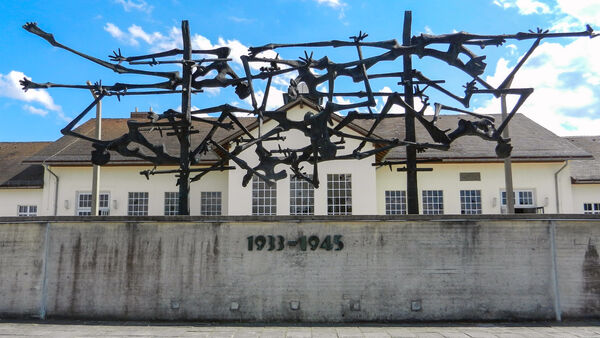Dachau and a ‘Grüss Gott’ Shop
By Rick Steves
With each visit to the memorial site of Dachau's infamous concentration camp I remember a chance contact I had with an older woman on the city bus from Munich to Dachau, a small town on Munich's outskirts. As I sat down next to her I felt acutely aware that I was clearly a tourist visiting her hometown to contemplate horrors committed there. I smiled at her weakly as if to say, "I don't hold your people's genocidal atrocities against you."
She glanced at me and sneered down at my camera. Suddenly, surprising me with her crusty but fluent English, she ripped into me.
"You tourists come here not to learn but to hate," she seethed. Pulling the loose skin down from a once-strong upper arm, she displayed a two-sided scar. "When I was a girl, a bullet cut straight through my arm," she said. "Another bullet killed my father. The war took many good people. My father ran a 'grüss Gott' shop."
I was stunned by her rage. But I sensed a desperation on her part to simply unload her story on one of the hordes of tourists who tramp daily through her town to ogle at an icon of the Holocaust. I asked, "What do you mean, a 'grüss Gott' shop?"
She explained that in Bavaria, shopkeepers greet customers by saying "grüss Gott" ("may God greet you"). During the Third Reich, even before the Nazi greeting was required by law, it was safer to change the greeting to "Sieg Heil." It was a hard choice. Each shopkeeper had to make it. As more and more shops became "Sieg Heil" shops, everyone in Dachau knew which shops were "grüss Gott" shops and which were "Sieg Heil" shops.
Pausing, as if mustering the energy for one last sentence, she stood up and said, "My father's shop was the last 'grüss Gott' shop," then stepped off the bus.
By the end of the line there were only tourists and pilgrims on the bus. Together, in silence, we walked into the concentration camp for a powerful education.
Dachau, founded in 1933, was the first concentration camp — a model camp and a training ground for wannabe camp commandants who studied such subjects as crowd control and torture. The camp at Dachau was built to hold 5,000 prisoners, but on Liberation Day 30,000 were found packed inside its walls. Some 3,000 were so sick that they died after liberation. The number of Dachau deaths is estimated at 40,000, but the total will never be known. Thousands of Russian soldiers were brought here as prisoners. Not even registered, they were simply taken into the field and shot.
Visitors start in the camp memorial's theater, which plays black-and-white film clips of the tangled bodies and ghostly faces of the dead that liberators found in 1945. At least a few people in the otherwise silent audience always gasp as the camera pans silently across the corpses. In other bits of film a frothing Hitler stands high, his hand waving furiously at his adoring masses. Even on the scratchy newsreel clips, he seems strangely charismatic, not dead but only hiding.
The memorial's museum gives some historical insight: Under Hitler, Germany's prison system overflowed, so a network of concentration camps was initially built to ease the overcrowding. A chart of the camp system network illustrates an integrated circuit of cruelty and misery — and, as the purpose of the camps evolved, of mass extermination.
When inmates arrived at Dachau's prison, they passed under the infamous Arbeit macht frei ("Work liberates you") sign. They were forced to trade their property, rights, and human dignity for a number.
No one had the right even to hope. During sick parade, the ill and infirm were beaten and ridiculed in public each evening. A museum photo shows a Jewish violinist forced to serenade the execution cart as his friend was paraded to his death. In this same photo, the eyes of the German guards have been scratched out.
When Dachau was finally liberated at the end of the war, the camp was a scene of chaos, dead bodies, and desperation. At the sight of this agony, battle-hardened American soldiers broke down and wept.
Dachau is both a barbed-wire box of memories and an eternal flame for the future. The sound of visitors' hushed voices and sad feet on the pebbled walk seem to promise remembrance while the breeze whispers "never again" through trees on the parade ground where inmates once stood. A sculpture, as big as the train cars that brought in the inmates, marks the middle of the camp. It's a black steel tangle of bodies — like the real ones of those who lost their lives here. At its base, in French, English, German, Russian, and Hebrew, is the wish of the survivors: Forgive, but never forget.

